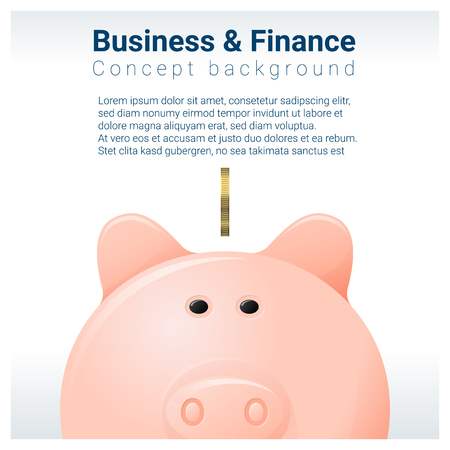1. Introduction: The Growing Appeal of Art Investment
Art has long been admired for its beauty and cultural significance, but in recent years, it has also emerged as a compelling alternative investment. More collectors and investors are recognizing the financial potential of art, leading to a surge in demand for fine art pieces. This shift is driven by several factors, including historical performance, market resilience, and increasing accessibility through digital platforms.
Historical Performance of Art as an Investment
Art has demonstrated strong financial returns over time, often outperforming traditional assets like stocks and bonds. Historically, blue-chip artworks—pieces created by well-established artists—have shown steady appreciation in value. Below is a comparison of average annual returns between art and other investment assets:
| Asset Class | Average Annual Return (%) |
|---|---|
| Blue-Chip Art | 8-10% |
| S&P 500 Index | 7-9% |
| Bonds | 3-5% |
| Gold | 6-8% |
The Increasing Interest from Collectors and Investors
The appeal of art investment has expanded beyond traditional collectors to a broader audience, including institutional investors and high-net-worth individuals. Several key trends contribute to this growing interest:
(1) Market Resilience During Economic Uncertainty
Unlike stocks or real estate, art often retains its value during economic downturns. Investors see it as a hedge against inflation and market volatility.
(2) Rise of Fractional Ownership and Digital Platforms
The introduction of fractional ownership platforms allows investors to buy shares in valuable artworks rather than purchasing entire pieces. This makes art investment more accessible to a wider range of investors.
(3) Increased Transparency and Data Availability
The availability of data-driven insights and valuation tools helps investors make more informed decisions when acquiring artworks.
2. Art vs. Traditional Investments: A Comparative Analysis
How Does Art Compare to Stocks and Real Estate?
When considering alternative investments, art is often compared to traditional assets like stocks and real estate. Each investment type has its own unique characteristics, risk factors, and potential returns. Understanding these differences can help investors make informed decisions.
Key Factors to Consider
Investors evaluating art as an asset class should consider the following factors:
(1) Volatility
Stock markets are known for their short-term fluctuations, influenced by economic conditions and corporate performance. Real estate tends to be more stable but can be affected by market cycles. Art, on the other hand, has lower day-to-day volatility but can experience price swings based on trends, artist popularity, and auction results.
(2) Liquidity
Liquidity refers to how quickly an asset can be sold at market value. Stocks are highly liquid, as they can be traded almost instantly. Real estate transactions take longer due to legal processes and market conditions. Art is relatively illiquid since selling a piece may require finding the right buyer or waiting for an auction.
(3) Long-Term Value Appreciation
Historically, blue-chip art (works from well-established artists) has appreciated over time, similar to real estate in prime locations. Stocks have shown long-term growth but are subject to market crashes. The key with art investment is selecting pieces with lasting cultural significance and demand.
Comparison Table: Art vs. Traditional Investments
| Investment Type | Volatility | Liquidity | Long-Term Appreciation |
|---|---|---|---|
| Art | Moderate (Depends on artist and trends) | Low (Requires auctions or private sales) | High (For established artists) |
| Stocks | High (Market-driven fluctuations) | High (Easily tradable) | Varies (Depends on market conditions) |
| Real Estate | Low to Moderate (Market-dependent) | Moderate (Can take months to sell) | High (Prime locations tend to appreciate) |
Is Art a Viable Investment Alternative?
The decision to invest in art versus traditional assets depends on an investor’s risk tolerance, liquidity needs, and long-term financial goals. While art lacks the liquidity of stocks or real estate, it offers portfolio diversification and the potential for significant appreciation over time.
The Role of Diversification
Diversification is key in any investment strategy. Art can serve as a hedge against stock market volatility and inflation, making it a valuable addition to a well-balanced portfolio.
(1) Inflation Protection
Tangible assets like art often retain value during periods of high inflation, unlike cash or fixed-income investments.
(2) Emotional and Cultural Value
Beyond financial returns, art provides aesthetic enjoyment and cultural significance, something traditional investments cannot offer.
(1) Considerations Before Investing in Art
- Research Artists: Focus on established names with a track record of appreciation.
- Diversify Within Art: Invest in different styles and periods to reduce risk.
- Understand Market Trends: Follow auction results and emerging artist performance.
- Consult Experts: Work with art advisors or galleries to make informed choices.
While art presents unique challenges compared to stocks and real estate, it remains an intriguing option for those looking beyond conventional investments.

3. Key Trends Shaping the Art Market
The Rise of Digital Art and NFTs
One of the most significant shifts in the art market has been the emergence of digital art and NFTs (non-fungible tokens). These blockchain-based assets have revolutionized how artists sell their work and how collectors invest in art. Unlike traditional artwork, NFTs offer provable ownership, scarcity, and a decentralized marketplace.
Key Benefits of NFTs for Investors
- Transparency: Blockchain technology ensures authenticity and provenance.
- Accessibility: Investors can buy and sell digital art globally without intermediaries.
- Liquidity: NFT marketplaces provide quicker transactions compared to traditional art sales.
The Impact of Global Economic Factors
The art market is closely tied to global economic conditions. Inflation, interest rates, and geopolitical events can influence investor sentiment and purchasing power. During economic uncertainty, some investors turn to art as a hedge against inflation, while others may reduce discretionary spending on luxury assets.
Comparison of Economic Factors Affecting Art Investment
| Economic Factor | Impact on Art Market |
|---|---|
| Inflation | Increases demand for tangible assets like art as a store of value. |
| Interest Rates | Higher rates may reduce available capital for art investments. |
| Geopolitical Events | Uncertainty can lead to volatility in high-end art sales. |
The Rise of Emerging Artists in the Investment World
Younger, contemporary artists are gaining recognition as investment-worthy creators. Collectors are increasingly looking beyond established names, seeking opportunities with rising talents whose works could appreciate over time.
Why Emerging Artists Are Gaining Popularity
- Affordability: Their artworks are often more accessible than those of renowned artists.
- Innovation: Emerging artists bring fresh perspectives and new techniques.
- Growth Potential: Early investments may yield significant returns if the artist gains prominence.
4. Risk and Challenges in Art Investment
Investing in art can be exciting and potentially profitable, but it also comes with significant risks. Unlike traditional assets such as stocks or real estate, the art market is less regulated and more unpredictable. Below, we explore the key challenges that investors should consider before diving into the world of art investment.
(1) Market Fluctuations
The value of artwork can be highly volatile. Trends in the art world shift quickly, and what is considered valuable today may lose demand tomorrow. Unlike stocks, which have publicly available financial data, art prices are influenced by subjective factors such as artist reputation, collector interest, and overall economic conditions.
(2) Authenticity and Provenance Issues
One of the biggest concerns in art investment is ensuring the authenticity of a piece. Forgeries and misattributions can lead to significant financial losses. Investors must conduct thorough due diligence, often requiring expert authentication services and provenance research to verify an artwork’s history and legitimacy.
(3) Valuation Challenges
Determining the true value of a piece of art is complex. Unlike publicly traded assets that have clear market prices, artwork valuation depends on subjective opinions from appraisers, auction houses, and collectors. Factors such as rarity, condition, historical significance, and market demand all play a role.
| Factor | Impact on Art Valuation |
|---|---|
| Artist Reputation | A well-known artist’s work tends to hold higher value. |
| Rarity | Limited edition or unique pieces are often more valuable. |
| Market Demand | If collectors highly seek after an artist’s work, prices rise. |
| Condition | Damaged or restored pieces may lose value. |
| Provenance | A well-documented history increases credibility and worth. |
(4) Liquidity Concerns
Unlike stocks or bonds that can be sold quickly, selling an artwork can take months or even years. The process involves finding the right buyer, working with galleries or auction houses, and paying high transaction fees. This lack of liquidity makes art a long-term investment rather than a quick-turnaround asset.
5. How to Get Started: Strategies for Art Investors
Investing in art can be an exciting and rewarding endeavor, but for newcomers, it may seem overwhelming. Understanding the fundamentals and taking a strategic approach can help you make informed decisions. Below are key strategies to get started with art investment.
Research and Education
Before making any purchases, its essential to educate yourself about the art market. Here are some ways to build your knowledge:
- Attend gallery exhibitions, auctions, and art fairs to observe trends.
- Follow art market reports and publications like Artprice, Artnet, or Sotheby’s reports.
- Engage with experts, collectors, and advisors to gain insights into valuation and demand.
Choosing the Right Pieces
Selecting the right artwork requires a combination of personal preference and market potential. Consider these factors when making a purchase:
| Factor | Description |
|---|---|
| Artist Reputation | Well-established or emerging artists with growing recognition tend to have more stable value. |
| Provenance | The artworks history of ownership can impact its desirability and authenticity. |
| Condition | A well-preserved piece retains its value better over time. |
| Market Demand | An artwork in high demand among collectors will generally appreciate in value. |
Diversification Strategies
Diversifying your art portfolio can help manage risks and increase long-term returns. Consider these approaches:
(1) Invest Across Different Art Forms
Avoid putting all your investment into a single type of art. Consider paintings, sculptures, digital art, or photography.
(2) Explore Various Time Periods
Merging contemporary pieces with classical or modern works can balance short-term trends with long-term appreciation.
(3) Purchase from Multiple Artists
A mix of established artists and emerging talents can provide stability while allowing for potential high-value growth.
Leveraging Expert Advice
If youre new to art investment, seeking professional guidance can be invaluable. Here are some resources that may help:
- Art Advisors: Professionals who guide investors on acquisitions and market trends.
- Auction Houses: Institutions like Christies or Sotheby’s provide expert valuations and insights into market dynamics.
- Museum Curators & Collectors: Engaging with experienced individuals can offer deeper knowledge on historical significance and future prospects.


